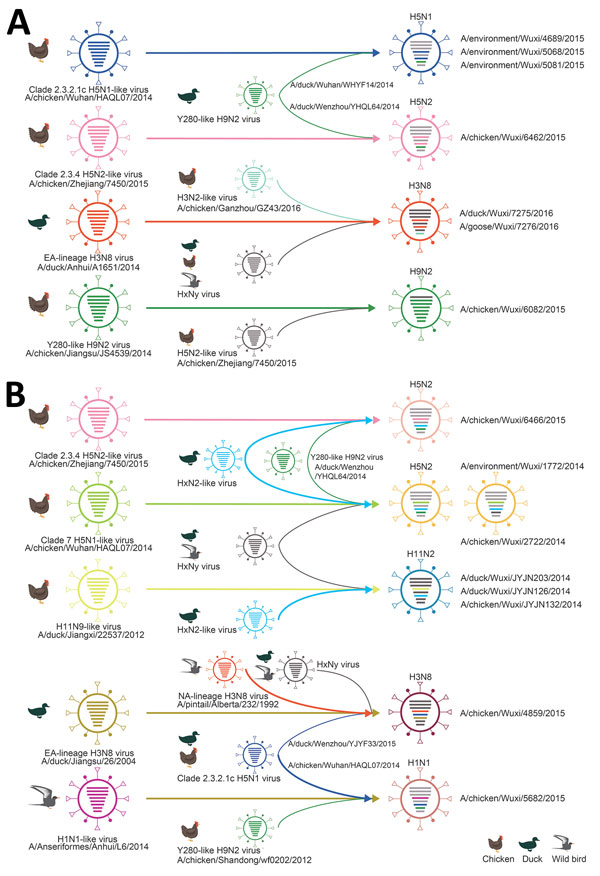Volume 24, Number 7—July 2018
Research
Avian Influenza A Virus Infection among Workers at Live Poultry Markets, China, 2013–2016
Figure 4

Figure 4. Probable genesis of reassortant influenza A viruses, Wuxi, Jiangsu Province, China, 2013–2016. A) Internal gene reassortment; B) hemagglutinin, neuraminidase, and internal gene exchanges. Virus particles are represented by ovals containing horizontal bars that represent the 8 gene segments (top to bottom: polymerase basic 2, polymerase basic 1, polymerase acidic, hemagglutinin, nucleoprotein, neuraminidase, matrix, and nonstructural); colors indicate sequence origin based on initial viruses shown at far left (gray bars indicate no sequence data available).
1These authors contributed equally to this article.
Page created: June 22, 2018
Page updated: June 22, 2018
Page reviewed: June 22, 2018
The conclusions, findings, and opinions expressed by authors contributing to this journal do not necessarily reflect the official position of the U.S. Department of Health and Human Services, the Public Health Service, the Centers for Disease Control and Prevention, or the authors' affiliated institutions. Use of trade names is for identification only and does not imply endorsement by any of the groups named above.